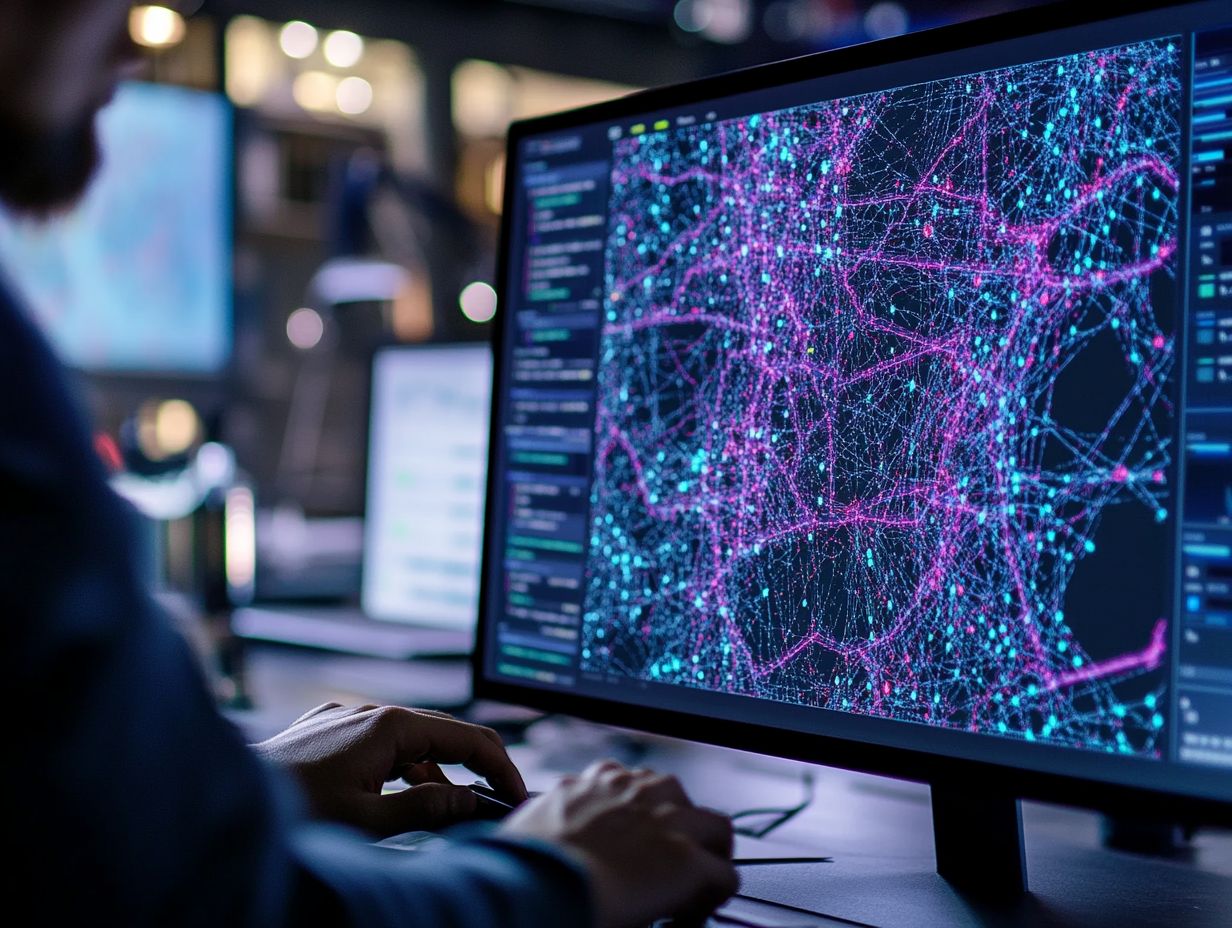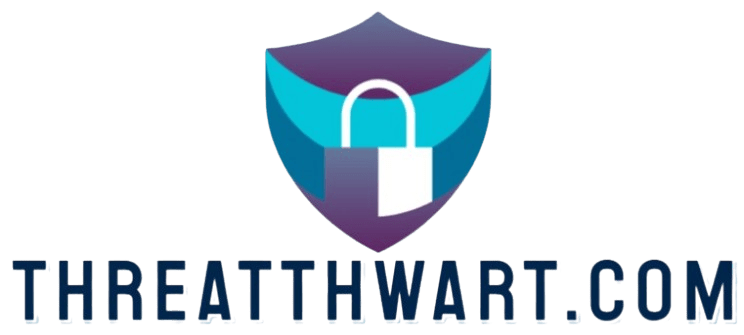the importance of asset discovery in vulnerability assessment
In today s digital landscape, it’s essential for you to understand your organization’s assets for effective vulnerability assessment.
Asset discovery serves as the foundation of a robust security strategy. It allows you to identify and manage potential vulnerabilities before they become exploitable.
This article delves into the importance of asset discovery, the various methods at your disposal, and best practices to elevate your security posture.
You ll discover common challenges encountered during this process and how to seamlessly incorporate asset discovery into your vulnerability assessments for maximum impact.
By gaining a solid understanding of your assets, you can transform your approach to cybersecurity.
Contents
- Key Takeaways:
- The Role of Asset Discovery in Vulnerability Assessment
- Why Asset Discovery is Important
- Improving Security Measures
- Methods for Conducting Asset Discovery
- Best Practices for Asset Discovery
- Challenges of Asset Discovery
- Integrating Asset Discovery into Vulnerability Assessment
- Frequently Asked Questions
- What is asset discovery and why is it important in vulnerability assessment?
- How does asset discovery impact the overall effectiveness of vulnerability assessment?
- What are some common methods used for asset discovery in vulnerability assessment?
- How often should asset discovery be performed in vulnerability assessment?
- What are the consequences of not prioritizing asset discovery in vulnerability assessment?
- How can organizations ensure effective asset discovery for vulnerability assessment?
Key Takeaways:

Asset discovery is a crucial component of vulnerability assessment. It allows organizations to identify potential risks and implement better security measures.
Automated techniques save time. However, manual methods offer thorough results.
To effectively integrate asset discovery into vulnerability assessment, follow best practices such as regularly updating asset inventories and considering the unique challenges of your specific environment.
The Role of Asset Discovery in Vulnerability Assessment
Asset discovery is crucial in vulnerability assessment. It enables you to identify and manage your IT and network assets with precision, highlighting the importance of follow-up after a vulnerability assessment.
A thorough asset inventory is fundamental to understanding the devices and systems operating within your environment. This is particularly important as you navigate complexities, such as unauthorized applications or devices connected to your network.
A comprehensive view of your network assets enhances your security posture. It also helps you comply with industry standards and regulations.
This awareness informs your risk assessment initiatives and streamlines your incident response efforts, ultimately strengthening your overall vulnerability management program.
Understanding Asset Discovery
Understanding asset discovery is essential for organizations aiming to maintain a secure and resilient IT infrastructure. It involves identifying and classifying all network assets, including both known and unknown devices.
Asset discovery goes beyond just servers. It includes everything from workstations and printers to virtual assets, cloud services, and IoT devices.
The primary goal is to create a precise inventory of these assets, allowing you to monitor their status effectively.
Automated asset discovery significantly enhances your visibility into these assets and bolsters your security measures. By leveraging the right tools, such as network scanning software and discovery protocols, you can swiftly identify potential vulnerabilities and respond proactively to emerging security threats.
Why Asset Discovery is Important
Don t wait! Asset discovery is vital for your organization s security. It helps you identify critical assets and enhances your ability to conduct effective risk assessments and manage vulnerabilities.
This proactive approach strengthens your security programs and ensures compliance with regulatory requirements.
Identifying Vulnerabilities and Risks
Identifying vulnerabilities and risks is crucial in asset discovery. It enables you to uncover unknown devices and evaluate their impact on your organization’s overall security posture.
These devices such as rogue smartphones, unauthorized IoT gadgets, or misconfigured servers can serve as entry points for potential cyber threats. Studies have shown that nearly 20% of all network devices often go unnoticed, creating substantial gaps in your security measures.
This underscores the importance of integrating asset discovery with risk analysis and vulnerability management.
Without a comprehensive view of your digital assets, you risk overlooking critical vulnerabilities, which could lead to data breaches or compliance failures.
Organizations that conduct regular scans and audits have discovered significant reductions in risk exposure, demonstrating that addressing hidden vulnerabilities is essential for maintaining robust cybersecurity.
Improving Security Measures

Improving your security measures flows directly from effective asset discovery. This allows you to tailor your security programs based on precise and comprehensive asset management.
When you have a clear view of your assets, it’s easier to pinpoint vulnerabilities and respond to incidents promptly. This enhanced visibility enables you to prioritize threats accurately, considering the criticality and exposure of each asset.
For example, using automated asset discovery tools helps you maintain an up-to-date inventory. This ensures your security team is fully aware of all devices and their configurations.
By integrating asset data with threat intelligence, you can proactively tackle emerging vulnerabilities. This enables swift patch applications where needed.
This approach streamlines your incident response and fosters a culture of continuous improvement in your security practices.
Methods for Conducting Asset Discovery
Act now by choosing the right methods for asset discovery! You can approach asset discovery through a variety of methods, using both manual and automated techniques.
Each of these methods presents unique advantages and challenges, allowing you to achieve comprehensive visibility into your network assets.
Manual vs Automated Techniques
Manual techniques for asset discovery often require a significant amount of effort. They yield only limited visibility into your network assets compared to more advanced automated methods.
These traditional approaches involve conducting surveys and meticulously checking inventories. They can be time-consuming and are susceptible to human error.
On the other hand, automated asset discovery presents a more efficient alternative. Tools that scan networks in real-time to identify and catalog assets can dramatically simplify this process.
Solutions like SolarWinds Network Configuration Manager and ManageEngine AssetExplorer streamline your efforts and enhance accuracy by reducing the need for manual input.
By integrating these automated tools into your routine, you achieve comprehensive visibility over all network components. This gives you the power to manage, track, and secure your valuable resources more effectively.
Best Practices for Asset Discovery
Implementing best practices for asset discovery is crucial for organizations that aim to elevate their security programs, ensure precise inventory management, and effectively meet compliance requirements.
By prioritizing these practices, you can enhance your operational integrity and safeguard your assets with confidence.
Key Considerations and Tips
Key considerations for your asset discovery strategy should include prioritizing automated methods. This approach maximizes your visibility into assets and enhances compliance requirements.
Ensure your asset inventories are updated regularly, promptly accounting for any newly acquired or decommissioned assets. Leveraging established security frameworks helps standardize your processes and bolster your overall security posture.
Integrating the right tools such as network scanning software and asset management systems can significantly improve your visibility into the entire asset landscape. Consider these actionable tips:
- Schedule periodic audits.
- Implement a centralized dashboard for real-time monitoring.
- Train your staff on best practices for asset management to enhance overall efficiency and compliance.
Challenges of Asset Discovery

Organizations encounter a range of challenges in asset discovery, including prevalent issues such as Shadow IT. Shadow IT refers to devices or software not officially managed by your IT department.
Other challenges include the existence of unknown devices and the intricacies involved in risk assessment.
Common Obstacles and How to Overcome Them
Common obstacles in asset discovery, like Shadow IT and unidentified vulnerabilities, can significantly undermine your organization s security posture if not addressed swiftly.
These challenges create a ripe environment for security breaches. Employees might unknowingly engage with unsanctioned applications that handle sensitive data, while hidden vulnerabilities linger undetected.
To tackle these issues, invest in comprehensive employee training that raises awareness about the dangers of using unauthorized apps. Utilizing advanced discovery tools can systematically identify and map all assets across your network, enabling your IT teams to efficiently assess potential risks and implement tailored security measures that fit your unique environment.
Integrating Asset Discovery into Vulnerability Assessment
Integrating asset discovery into your vulnerability assessment is essential for achieving effective risk-based vulnerability management. This approach enhances your overall security program and provides greater visibility into your assets. This allows you to make informed decisions and strengthen your security posture.
Maximizing the Benefits of Asset Discovery
Maximizing the benefits of asset discovery means leveraging automated asset discovery techniques to meet compliance requirements while safeguarding your critical assets.
To truly harness the potential of asset discovery, implement regular updates and thorough audits of your asset inventories. This keeps your asset database current and helps you identify any potential vulnerabilities in a timely manner.
Imagine a financial institution that significantly boosts its risk management by integrating a powerful asset discovery tool. This proactive approach not only aligns with compliance standards but also enhances overall security!
By frequently recalibrating their asset lists and conducting quarterly audits, they effectively reduced operational risks and enhanced their security posture. This serves as a compelling example of the value of a proactive asset management strategy.
Frequently Asked Questions
What is asset discovery and why is it important in vulnerability assessment?

Asset discovery means finding and listing all the devices and software in your network. It is important in vulnerability assessment because it provides a comprehensive understanding of the network’s attack surface. This allows for more accurate vulnerability identification and risk assessment.
How does asset discovery impact the overall effectiveness of vulnerability assessment?
Asset discovery is a crucial step in vulnerability assessment. It ensures that all assets are accounted for and assessed for potential vulnerabilities. Without proper asset discovery, there is a risk of overlooking critical assets, leading to incomplete vulnerability assessments and a higher risk of successful cyber attacks. Emphasizing the importance of continuous improvement in vulnerability assessment can help mitigate these risks effectively.
What are some common methods used for asset discovery in vulnerability assessment?
Some common methods used for asset discovery in vulnerability assessment include network scanning, active and passive discovery tools, and manual inventory audits. Each method has its own advantages and disadvantages. Organizations may use a combination of methods to achieve the most comprehensive results.
How often should asset discovery be performed in vulnerability assessment?
Asset discovery should be performed regularly, at least once a year, as network environments are constantly changing. Regular asset discovery ensures that new assets are identified, and changes to existing assets are reflected in the vulnerability assessment process.
What are the consequences of not prioritizing asset discovery in vulnerability assessment?
Not prioritizing asset discovery in vulnerability assessment can lead to critical assets being overlooked. This results in inaccurate vulnerability assessments and increases the risk of successful cyber attacks. Overlooking asset discovery can also lead to compliance issues and potential financial and reputational damage for the organization.
How can organizations ensure effective asset discovery for vulnerability assessment?
Organizations can ensure effective asset discovery for vulnerability assessment. They should regularly review and update their asset inventory.
Use a mix of methods to find and track assets. Including asset discovery in your vulnerability management is crucial.
Proper documentation and procedures are essential for effective asset discovery. Act now to protect your organization from vulnerabilities!






